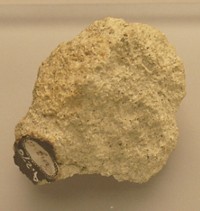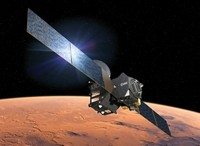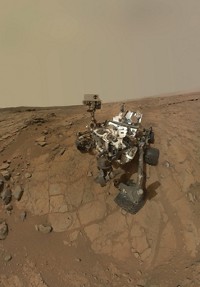Advertisement
Grab your lab coat. Let's get started
Welcome!
Welcome!
Create an account below to get 6 C&EN articles per month, receive newsletters and more - all free.
It seems this is your first time logging in online. Please enter the following information to continue.
As an ACS member you automatically get access to this site. All we need is few more details to create your reading experience.
Not you? Sign in with a different account.
Not you? Sign in with a different account.
ERROR 1
ERROR 1
ERROR 2
ERROR 2
ERROR 2
ERROR 2
ERROR 2
Password and Confirm password must match.
If you have an ACS member number, please enter it here so we can link this account to your membership. (optional)
ERROR 2
ACS values your privacy. By submitting your information, you are gaining access to C&EN and subscribing to our weekly newsletter. We use the information you provide to make your reading experience better, and we will never sell your data to third party members.
Environment
Curiosity Confirms Organics On Mars
The chlorinated compounds’ source can’t be determined but tantalizes scientists in search of evidence for life on the Red Planet
by Elizabeth K. Wilson
December 22, 2014
| A version of this story appeared in
Volume 92, Issue 51
NASA’s Mars rover Curiosity has discovered that organic compounds are present in the soil of the Red Planet, scientists announced on Dec. 16 at the American Geophysical Union meeting in San Francisco. Curiosity also recently detected a localized but dramatic surge of methane of unknown origin in the martian atmosphere (Science 2014, DOI: 10.1126/science.1261713). Organic compounds, particularly methane, are generally produced by living organisms, although these compounds can be synthesized by abiotic reactions of soil, water, and solar radiation. Right now, scientists say they have no way of determining their source on Mars. But the rover did detect the presence of chlorobenzene, dichloroethane, dichloropropane, and dichlorobutane. The molecules are likely the products of precursor organics and formed during heating of the perchlorate-rich martian soil. Methane plumes have been detected on Mars previously, but the new measurements are the first from a craft on the martian surface. Over a period of 20 months, Curiosity recorded background atmospheric levels of methane of about 0.7 ppb. But then suddenly methane levels climbed to 9 ppb over several months. Scientists suggest the gas is periodically escaping from clathrates beneath the ground.





Join the conversation
Contact the reporter
Submit a Letter to the Editor for publication
Engage with us on Twitter